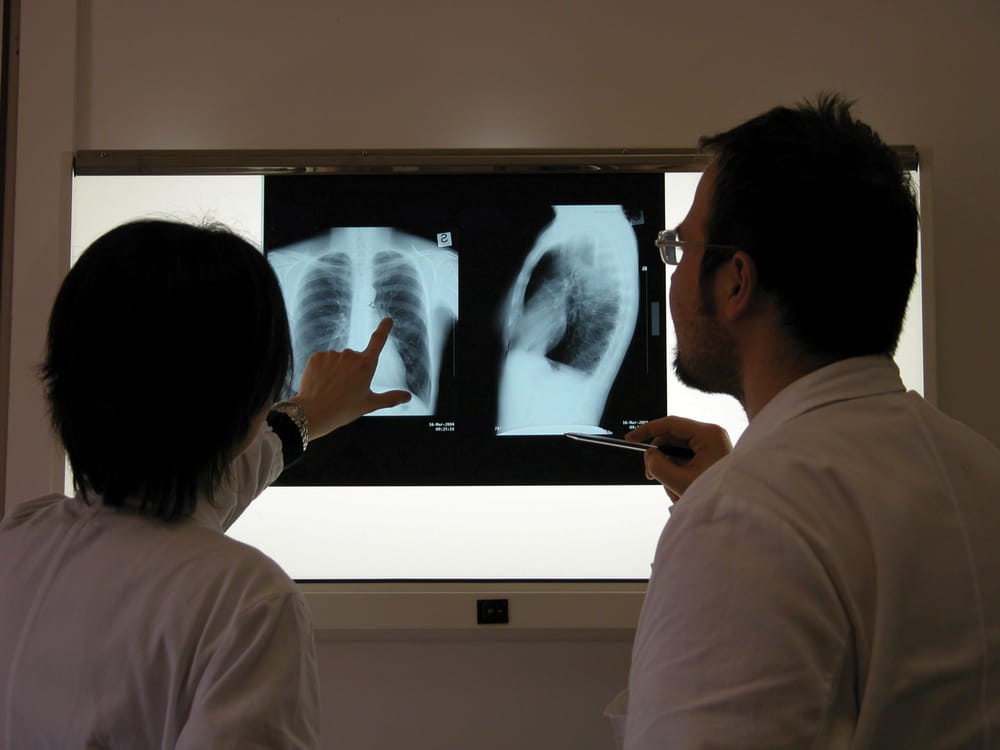The return of consumption
As consumption, or tuberculosis, continues to spread, scientists are racing to find a new vaccine

The infected individual wastes away with fever, sweats and a chronic cough. The disease appears to consume them from within. It is the same disease that consumes Satine, played by Nicole Kidman in Moulin Rouge!, and has been a big killer for centuries. Even today consumption, known now as tuberculosis or TB, is still the biggest killer out of all bacterial diseases. TB is caused by Mycobacterium tuberculosis (Mtb) and, unlike other European countries, infection rates are on the rise in the UK, with 40% of cases here in London. This unexpected rise appears to be linked to the increasing number of internationals entering the country with undetected TB.
TB is hard to treat partly due to its complex cell wall which prevents many drugs from entering the bacterium. Standard antibiotic treatment lasts between 6-24 months. This poses a problem in many developing countries where clinics are few and far between and where patients often do not return for repeat prescriptions. Treatment is becoming increasingly difficult with the increase of multi-drug resistant strains. Vaccination, therefore, is seen as the best method to prevent infection and the spread of TB. The current vaccine, Bacillus Calmette-Guérin (BCG), which has left many of us with an ugly scar on our arm, is a live attenuated version of M. bovis, the cow version of Mtb. BCG has been in use for around 90 years but the many problems with this vaccine have led to a quest for a replacement. BCG only offers protection for around 10 years and protection wanes in adults. It also has different efficacy in different countries. A trial in India, for example, showed no protective properties at all. This may be due to a reduced protection in people in Asia and Africa who may have been exposed to other Mycobacterial species and may have genetic differences which reduces the vaccine’s effectiveness.
Unlike other European countries, infection rates are on the rise in the UK, with 40% of cases here in London
In the past 90 years there have been no other successful candidate vaccines. Research into new TB vaccines is currently largely based on the search for highly immunogenic antigens (a substance that induces an immune response) on the cell surface of Mtb. A few possible candidates have been thrown up; there are currently 12 vaccines in clinical trials. GlaxoSmithKline’s Mtb72f vaccine contains two surface antigens, one of which is a protein named PPE18, currently being researched in the Centre of Molecular Microbiology and Infection here at Imperial. Most vaccine candidates have little chance of making it through the vigorous clinical trials with preliminary data showing little more protection than BCG already offers.
In March, Imperial announced that the Tuberculosis Research Group in the National Heart and Lung Institute had discovered a novel target protein called EspC that may have use as a potential TB vaccine. The Veterinary Laboratories Agency pointed out in 2008 that EspC was highly immunogenic. The authors also stated that it was only secreted by Mtb, not M. bovis BCG, making it potentially useful for new diagnostic tests. New diagnostics are needed due to BCG interfering with the current test used and giving false positives. The Tuberculosis Research Unit have further shown EspC to illicit a strong immune response from T-cells isolated from patients infected with TB, therefore this makes it a potential vaccine candidate.
There are three main ways of tackling TB: diagnosis, vaccination, and drugs that reduce spread and pathology of the disease. TB is transmitted from person to person usually through the air from the cough of an infected patient. Last month, Imperial published findings that MMP-1, an enzyme regulated by monocytes in the presence of Mtb, damages the collagen in lung tissue. This can result in coughing which can spread Mtb through the air. As there are drugs to supress MMP-1 we may be able to reduce the spread of TB and reduce immunopathology.
It is unlikely that the vaccine candidates in clinical trials at the moment will come out of the pipeline to become vaccines. The current method of taking any protein that elicits a strong immune response and using it as a potential vaccine without knowing its function or structure is slightly worrying. It has clearly not been the correct method for finding potential vaccine targets due to a lack of new vaccines in the last century. One of the main problems facing vaccine construction is the incomplete knowledge of what constitutes protective immunity.
Until there is a good understanding of Mtb infection it is unlikely there will be a better vaccine than the BCG. The best option at the moment is to make a better BCG vaccine of which there are three potential candidates in clinical trials now. Only time and rigorous clinical trials will tell if one of these three will be the knight in shining armour of vaccines.








